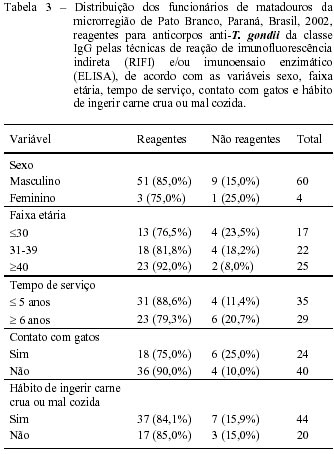In order to determine the role of bovine meat in the epidemiology of toxoplasmosis, 348 serum samples were collected from cattle and 64 serum samples from slaughterhouse workers at four plants in the region of Pato Branco, Paraná state, southern Brazil. Cattle sera were examined by the indirect fluorescent antibody test (IFAT), showing an IgG-seropositivity of 41.4%. The most frequently titer found was 64 (92.4%). Maximum titer found was 1024. There was no significant difference concerning sex, age and origin of positive sera. Human sera were tested by the IFAT and enzyme-linked immunosorbent assay (ELISA), showing 67.2% and 84.4% of IgG-seropositivity, respectively. No significant difference was observed between prevalences and age, sex, duration of employment at slaughterhouse, contact with cats and eating raw or undercooked meat. Results suggest that bovine meat may be a possible source of toxoplasmosis in the region.
toxoplasmosis; cattle; slaughterhouses; antibodies



